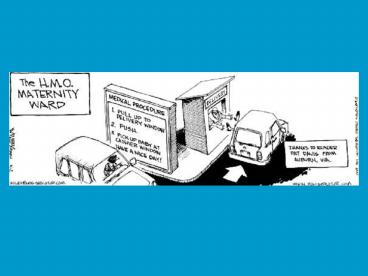Biol 155 Human Physiology - PowerPoint PPT Presentation
Title:
Biol 155 Human Physiology
Description:
Title: Biol 155 Human Physiology Author: Robert Harris Last modified by: Bob Created Date: 4/14/2003 9:06:15 PM Document presentation format: On-screen Show – PowerPoint PPT presentation
Number of Views:112
Avg rating:3.0/5.0
Title: Biol 155 Human Physiology
1
(No Transcript)
2
Fluid Balance
3
Balance
- Fluid Balance
- When the water coming into the body precisely
equals the water being lost by the body each day. - Electrolyte Balance
- Gains and losses of electrolytes are equal.
- Acid-base balance
- When the production of H is precisely offset by
H loss and/ or HCO3- production.
4
Overall body composition
5
(No Transcript)
6
Ionic composition of body fluids
7
Electrolyte balance
8
(No Transcript)
9
(No Transcript)
10
Acid-base balance
11
(No Transcript)
12
(No Transcript)
13
(No Transcript)
14
(No Transcript)
15
(No Transcript)
16
Respiratory acid-base regulation
17
(No Transcript)
18
(No Transcript)
19
(No Transcript)
20
(No Transcript)
21
(No Transcript)
22
Metabolic acid-base regulation
23
(No Transcript)
24
(No Transcript)
25
(No Transcript)
26
(No Transcript)
27
(No Transcript)
28
The Integumentary System An Overview
29
Integumentary system functions
- Protection
- Excretion
- Temperature maintenance
- Nutrient storage
- Vitamin D3 synthesis
- Sensory detection
30
The integumentary system consists of
- Cutaneous membrane
- Epidermis
- Dermis
- Accessory structures
- Subcutaneous layer
31
The Components of the Integumentary System
32
Thin Skin and Thick Skin
- The epidermis is composed of layers of
keratinocytes - Thin skin four layers (strata)
- Thick skin five layers
33
The epidermis
- Provides mechanical protection
- Prevents fluid loss
- Keeps microorganisms from invading the body
34
Layers of the epidermis
- Stratum germinativum
- Stratum spinosum
- Stratum granulosum
- Stratum lucidum (found in thick skin only)
- Stratum corneum
35
The Epidermal Ridges of Thick Skin
Figure 5.3
36
Epidermal characteristics
- Cells accumulate keratin and eventually are shed
- Epidermal ridges are interlocked with dermal
papillae - Fingerprints
- Improve gripping ability
- Langerhans cells (immunity) in s. spinosum
- Merkel cells (sensitivity) in s. germinativum
37
The Structure of the Epidermis
38
Skin color depends on
- Blood supply
- Carotene and melanin
- Melanocytes produce melanin and protect from UV
radiation - Epidermal pigmentation
- Interrupted blood supply leads to cyanosis
39
Melanocytes
40
Epidermal cells
- Synthesize vitamin D3 (cholecalciferol) when
exposed to UV - Respond to epidermal growth factor
- Growth
- Division
- Repair
- Secretion
41
Dermal Organization
- Papillary layer
- Contains blood vessels, lymphatics, sensory
nerves of epidermis - Reticular layer
- Contains network of collagen and elastic fibers
to resist tension
42
Dermal Circulation and innervation
- Cutaneous plexus arteries found in subcutaneous
layer/ papillary dermis - Cutaneous sensory receptors (light touch,
pressure)
43
(No Transcript)
44
Stretch marks
- Caused by excessive stretching of the dermis
- Patterns of collagen and elastic fibers form
lines of cleavage
45
Lines of Cleavage of the Skin
46
Hypodermis
- Stabilizes skins position against underlying
organs and tissues
47
Hairs
- Originate in hair follicle
- Composed of root and shaft
- Root base (hair papilla) surrounded by hair bulb
and root hair plexus - Hairs have soft medulla and hard cortex
- Cuticle superficial dead protective layer
48
Hair types
- Vellus hairs (peach fuzz)
- Terminal hairs ( heavy)
- Club hair (cessation of growth)
- Shed and grow according to hair growth cycle
- Arrector pili muscle attaches to hair
49
The Anatomy of a Single Hair
50
Hair Follicles
51
Glands in the skin
- Sebaceous (oil)
- Suderiferous (sweat)
- Mammary
- Ceruminous
52
Sebaceous glands
- Discharge waxy sebum onto hair shaft when
associated with hairs - Sebaceous follicles discharge onto epidermal
surface
53
Sebaceous Glands and Follicles
54
Suderiferous glands
- Apocrine sweat glands
- Produce odorous secretion
- Merocrine (eccrine) sweat gland
- Sensible perspiration
55
Figure 5.12 Sweat Glands
Figure 5.12a, b
56
(No Transcript)
57
(No Transcript)
58
(No Transcript)
59
Other glands
- Mammary glands
- Structurally similar to apocrine sweat glands
- Ceruminous glands
- In ear, produce waxy cerumen
60
Nails
- Nail body covers the nail bed
- Nail production occurs at the nail root
- Eponychium (cuticle) overlies root
- Free edge of nail extends over hyponychium
61
The Structure of a Nail
62
Injury and repair
- Regenerates easily
- Regeneration process includes formation of
- Scab
- Granulation tissue
- Scar tissue
63
Integumentary Repair
64
Integumentary Repair
65
(No Transcript)
66
With age
- Integument thins
- Blood flow decreases
- Cellular activity decreases
- Repairs occur more slowly































